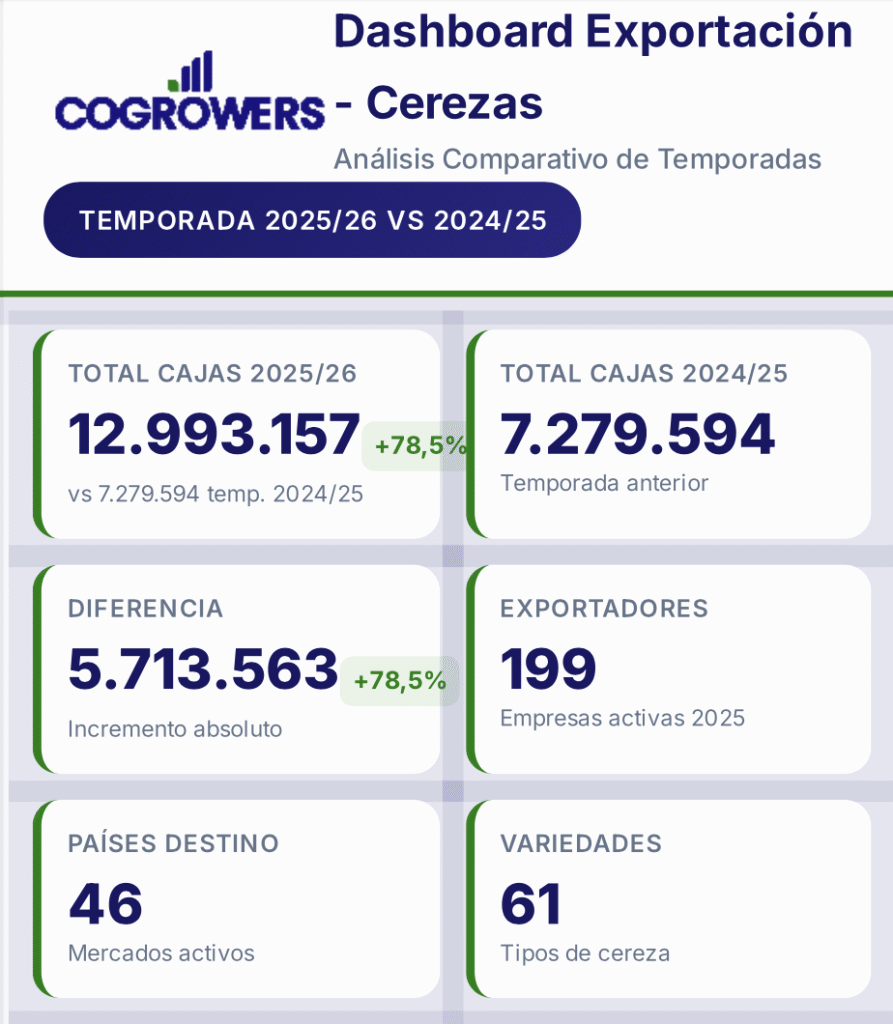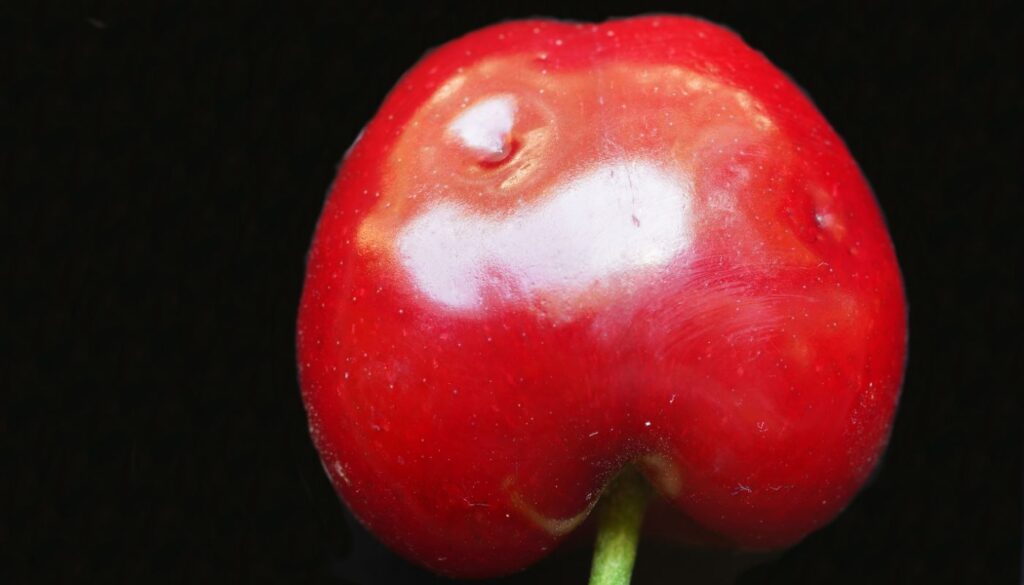Article prepared from the perspective of an agricultural engineer, specialist advisor in nutrition and soil, Lucas Ferrada of Kalf Consulting.
The 2023-2024 cherry season begins, entering the summer of 2023, once the harvests are finished and the post-harvest period begins, where we must generate new shoots, new roots and the very important accumulation of reserves such as sugars and amino acids in the different structures to be used in the reproductive processes of the plants at the beginning of the coming spring. It is important to consider the differences that existed between the previous season and the recently experienced 2023-2024 season, where there are variables between seasons that are not minor to consider.
In thermal terms, when comparing the average maximum and minimum temperatures of the different months, measured between November and May, we see differences that vary, depending on the month, between 1 to 2 ºC more in summer 2023 compared to summer 2022. If we compare the maximum temperatures, on average for the entire summer it is 2 ºC more than the previous season. If we consider the number of days in which temperatures above 30ºC were recorded between the months of November to May, we have an average of 62% of a greater number of days last summer compared to the previous one.

Once the heavy winter rains arrived at the end of June and July, we had orchards with enormous hydraulic pressure on soils, where many of them were under water for weeks and two phenomena occurred that make up the scenario of productive complexity. The first phenomenon was compaction, which generated enormous masses of accumulated water, this phenomenon was siderally greater in clay soils where we saw compactions that had not been seen before and of course root loss. The second phenomenon, considering that the internal root movement (Reserve movements) occurs at the end of July, this movement probably did not exist because the roots were in anoxia conditions, so this last phenomenon, accompanied by previous wear and tear due to the delay in entering the winter recess, adds up to an entry into spring with fewer reserves than previous seasons.
There is a third thesis that involves a third phenomenon and it is the generation of growth hormones by the roots when they are in anoxia states, which added to the lack of cold hours generated a hormonal imbalance that was very difficult to correct during the season.

In accordance with the issues discussed in previous paragraphs, there are also delays in being able to start watering the different orchards. On the one hand, one group was oversaturated with water until very late in the season, and on the other hand, there were infrastructure problems caused by the huge masses of winter water that delayed the watering process by at least 3 to 4 weeks. (depends on the sector, valley, etc.) the beginning of irrigation and nutrition. For this reason, being able to produce quality fruit with a good trip was very difficult, we had to use new technologies and we also saw the need to make changes in the way we were doing the nutritional programs. In many cases these programs were corrected 3 to 5 times, since the development projection of the orchards was very difficult to read.

There were very few realities where it was possible to fertilize and nourish cherry orchards correctly, which helps to obtain fruit in a lower condition than what we are used to in Chile.
From this point of view, the fruit was lighter, with a hard time gaining brix levels and lowering acidity, and in many cases the fruit was a little softer than usual.
However, the 2024-2025 cherry season is starting again, post-harvest has already begun (for many varieties it has already begun) and we must prepare the orchards for the next flowering and sprouting to achieve a productive compensation with respect to the season just past. The last season leaves us with teachings and lessons and a reminder that we must be constantly innovating and working as a team with more intensity, all together, producers, suppliers, exporters and advisors.









